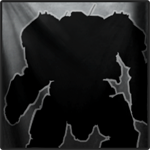My experience with JJ is that the majority of your thrust time (i.e. the latter part) applies just enough upward force to counter the weight of your 'Mech. So after your initial upward acceleration, the latter stages of JJ fuel consumption only allow you to maintain the upward velocity you currently have.
If you turn off JJs and start to fall, turning them back on again basically prevents your fall from accelerating but it doesn't really slow you down. Your experience may be slightly different in smaller mechs with large numbers of jets, but that's basically how the system feels to me.
Horizontal momentum appears to be preserved 100% on liftoff but there's variable deceleration on landing depending on how hard you hit the ground. Since JJs don't allow you to accelerate upwards after your initial liftoff it's very difficult to land perfectly.
The softest landing possible is generally achieved by turning off your JJs and then flipping them back on as soon as your vertical velocity goes negative. The trick is to have enough fuel remaining to float all the way back to the ground; if your initial launch is too long then you'll run out of fuel prematurely on landing.
Edited by Shlkt, 07 April 2014 - 09:05 AM.

































